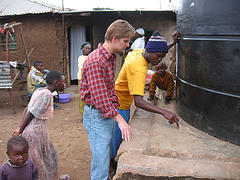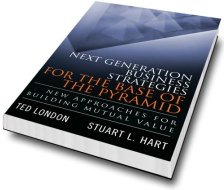Chapter 3: Taking the Green Leap to the Base of the Pyramid
Stuart Hart, Johnson School of Management, Cornell University
 Can the BoP teach the “ToP” (the “top of the pyramid”) anything? Author Stuart Hart says “yes.” In the old BoP model, Western entrepreneurs sought to sell goods and services to the BoP with little regard to environmental consequences. Today, Hart argues, the next generation of entrepreneurs are trying to develop distributed, smallscale, “small-footprint” products and services that are more appropriate to the BoP context—and may well point the way toward better models for the ToP, as well.
Can the BoP teach the “ToP” (the “top of the pyramid”) anything? Author Stuart Hart says “yes.” In the old BoP model, Western entrepreneurs sought to sell goods and services to the BoP with little regard to environmental consequences. Today, Hart argues, the next generation of entrepreneurs are trying to develop distributed, smallscale, “small-footprint” products and services that are more appropriate to the BoP context—and may well point the way toward better models for the ToP, as well.
Chapter 4: Needs, Needs, Everywhere, But Not a BoP Market to Tap
Erik Simanis, Center for Sustainable Global Enterprise, Johnson School of Management, Cornell University
Market creation, argues author Erik Simanis, is fundamentally different from market entry. And although the BoP is a “basket of compelling needs,” it is not yet a “market” in the traditional sense of that term. As a result, entrepreneurs in the BoP context have to think in terms of market creation—and understand how to achieve that end in a uniquely challenging context. The wise venture in the BoP space, Simanis writes, learns how to frame the value proposition and manage the innovation process (through seeding, base-building, and growth and consolidation) in ways that align business strategy with BoP opportunity. Through a sustained case study involving a soy-protein product, Simanis illustrates how to stay on track while building markets with the BoP.




